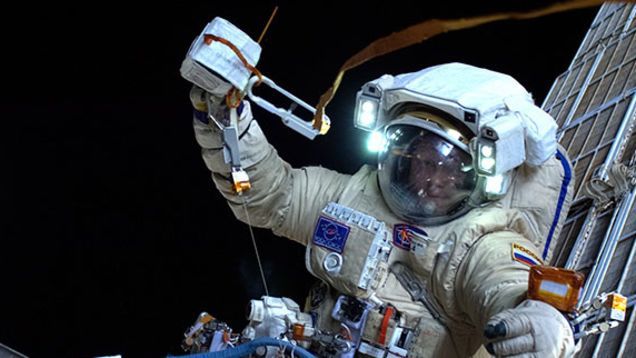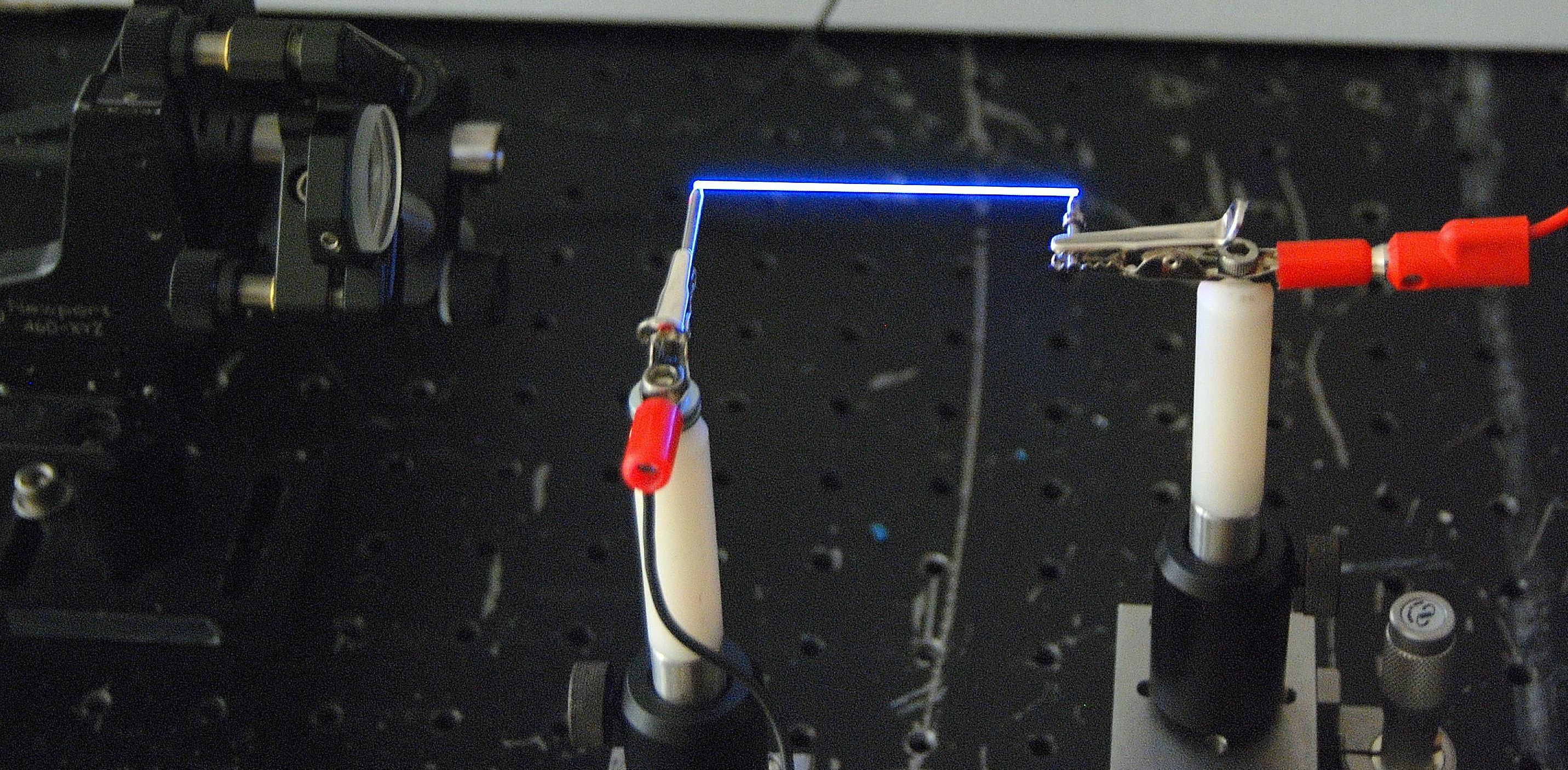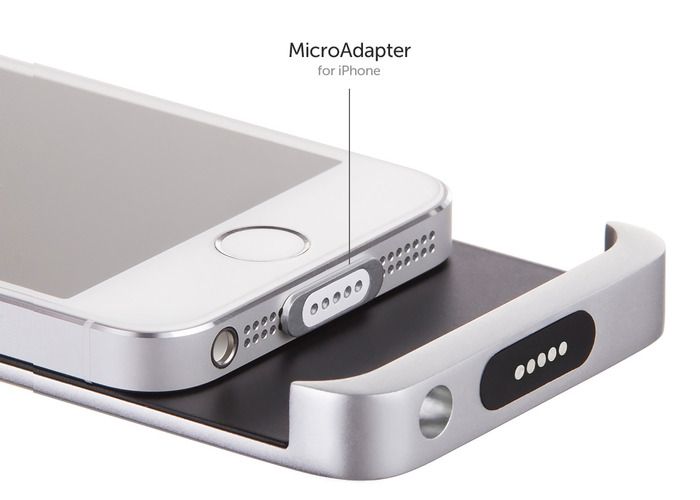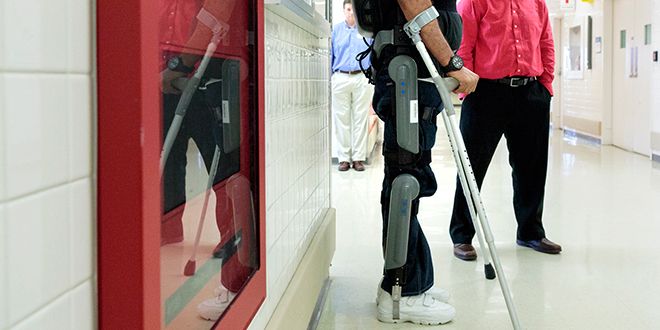Page 10885
Sep 21, 2015
Pentagon’s Project ‘Avatar’: Same as the Movie, but With Robots Instead of Aliens
Posted by Shailesh Prasad in categories: military, robotics/AI
Soldiers practically inhabiting the mechanical bodies of androids, who will take the humans’ place on the battlefield. Or sophisticated tech that spots a powerful laser ray, then stops it from obliterating its target.
If you’ve got Danger Room’s taste in movies, you’ve probably seen both ideas on the big screen. Now Darpa, the Pentagon’s far-out research arm, wants to bring ’em into the real world.
In the agency’s $2.8 billion budget for 2013, unveiled on Monday, they’ve allotted $7 million for a project titled “Avatar.” The project’s ultimate goal, not surprisingly, sounds a lot like the plot of the same-named (but much more expensive) flick.
Sep 21, 2015
Beautiful Images of Astronauts Releasing Nanosatellites Into Space
Posted by Shailesh Prasad in category: space
This is Oleg Artemyev. In his hand is a tiny satellite, known as a nanosatellite, called Chasqui 1—and he’s about to throw it into the wilds of space.
Well, throw might not be quite the right word—Artemyev would favor “deploy”—but it’s not far off. Alexander Skvortsov and Oleg Artemyev conducted a 5-hour spacewalk on Monday, and part of that involved letting the satellite drift slowly into orbit, as well removing and installing some new scientific equipment.
You can see pictures of Artemyev releasing the satellite below—and choose your own word for the process. [Oleg Artemyev via NASA via Gizmodo ES].
Sep 21, 2015
Laser ‘Lightning rods’ channel electricity through thin air
Posted by Shailesh Prasad in category: energy
By zapping the air with a pair of powerful laser bursts, researchers at the University of Arizona have created highly focused pathways that can channel electricity through the atmosphere.
The new technique can potentially direct an electrical discharge up to 10 meters (33 feet) away or more, shattering previous distance records for transmitting electricity through air. It also raises the intriguing possibility of one day channeling lightning with laser power.
Described in a paper published in The Optical Society’s new open-access journal Optica, the current system may have near-term, lifesaving applications in areas such as the remote detonation of land mines, the researchers speculate. The laser system could easily pinpoint an active land mine and then carry an electric pulse strong enough to safely discharge harmful explosives from afar.
Sep 21, 2015
New ‘shape-shifting’ material can reconstruct faces
Posted by Shailesh Prasad in categories: 3D printing, biotech/medical, materials
Called a shape-memory polymer (SMP) and developed by a team at Texas A&M University in the US, this biodegradable material can be used to fill in gaps in a damaged face and act as a scaffold to guide the growth of existing bones.
The researchers made their shape-memory polymer by linking molecules of another material — polycaprolactone, or PCL — and whipping it into a foam. According to Jackie Hong at Motherboard, the material is soft and easy to mould when heated to 60°C (140°F), and sets when it’s cooled to body temperature without becoming brittle. It can be used in 3D printing and moulding, which means it can be shaped into extremely precise models and bone scaffolds, and it’s full of tiny holes like a sponge, which allows bone-producing cells called osteoblasts to collect inside and grow.
According to Hong, the researchers enhanced this osteoblast-growing effect by coating their SMP material in polydopamine — a different kind of polymer substance that helps bind existing bones to the SMP scaffold, and has been shown in previous studies to encourage the growth of osteoblasts. Over a three-day trial, their coated SMP scaffold grew five times more osteoblasts than their uncoated scaffold.
Sep 21, 2015
Nanogel Speeds Healing Process for Burn Victims
Posted by Shailesh Prasad in categories: biotech/medical, nanotechnology
Got a nasty burn? Nanogel has you covered. Using the power of nanotechnology, this cutting-edge simply sprays burns away, and speeds the healing process.
Sep 21, 2015
Kickstarter campaign bringing magnetic charging to iPhone
Posted by Shailesh Prasad in categories: energy, mobile phones
If you’ve got an iPhone, there is a good chance you also have a MacBook. The MagSafe charger on Apple’s laptop offerings is easy to use, leading some to want an iPhone with the same functionality. A recently funded Kickstarter is attempting to bring it to us, and even slaps in a battery pack for good measure.
The draw for Cabin is twofold: the magnetic charging, and the battery pack. The battery pack slips onto the rear of the device, much like we see with the Case+ lineup from Logitech. Aluminum, Cabin is relying on your sensitivity to style for the battery pack. At 2200mAh, it’ll charge you up more than once, too.
The magnetic charging is a bit more adapter than anything else. By taking a lightning connector and working a pinned magnetic charger on the end, we get simple, easy, and (hopefully) effective charging. What you won’t be able to do is use your MacBook charger. Cabin includes a Lightning adapter and dock (if you spend a touch more), though.
Sep 21, 2015
Move aside, Segway: Honda’s Uni-Cub could make walking a thing of the past
Posted by Shailesh Prasad in category: transportation
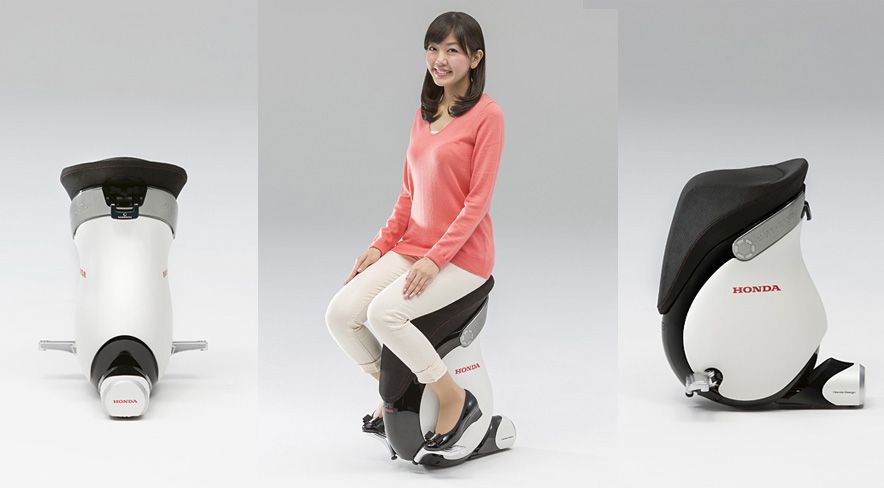
https://youtube.com/watch?v=_Me1P0JljVk
Behold, the future of personal mobility devices: The Honda Uni-Cub. The Uni-Cub, which is self-balancing, has zero turning radius, and is battery powered, is essentially a sit-on Segway without any handlebars. Most importantly, the Uni-Cub is much smaller and easier to maneuver than the Segway, allowing for Uni-Cub users to ride alongside or even within a pack of pedestrians (and yes, when you sit on the Uni-Cub, you don’t tower above everyone else: your head is at the same height as someone standing up). The main usage scenario for the Uni-Cub is moving around internal spaces, such as offices and museums: Not only is it easier and faster than walking, but compared to other personal mobility devices it also leaves your hands free to operate a smartphone or some other implement of your choosing.
Sep 21, 2015
This tree produces 40 different types of fruit (Science Alert)
Posted by Shailesh Prasad in categories: food, sustainability
An art professor from Syracuse University in the US, Van Aken grew up on a family farm before pursuing a career as an artist, and has combined his knowledge of the two to develop his incredible Tree of 40 Fruit.
In 2008, Van Aken learned that an orchard at the New York State Agricultural Experiment Station was about to be shut down due to a lack of funding. This single orchard grew a great number of heirloom, antique, and native varieties of stone fruit, and some of these were 150 to 200 years old. To lose this orchard would render many of these rare and old varieties of fruit extinct, so to preserve them, Van Aken bought the orchard, and spent the following years figuring out how to graft parts of the trees onto a single fruit tree.
Working with a pool of over 250 varieties of stone fruit, Van Aken developed a timeline of when each of them blossom in relationship to each other and started grafting a few onto a working tree’s root structure. Once the working tree was about two years old, Van Aken used a technique called chip grafting to add more varieties on as separate branches. This technique involves taking a sliver off a fruit tree that includes the bud, and inserting that into an incision in the working tree. It’s then taped into place, and left to sit and heal over winter. If all goes well, the branch will be pruned back to encourage it to grow as a normal branch on the working tree.
Sep 21, 2015
This Computerized Exoskeleton Could Help Millions of People Walk Again
Posted by Shailesh Prasad in categories: computing, cyborgs, transhumanism
The ReWalk is the first bionic exoskeleton approved by the FDA for personal use. Here’s the story of how it came to be.
